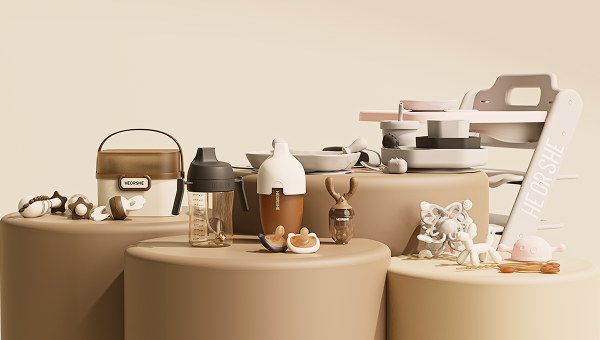Choosing the right toys for your baby is essential for their development and safety. As your little one grows, their needs, abilities, and interests change, and finding age-appropriate toys that match these stages is key to supporting their learning and growth. This guide will help you navigate the process of selecting the best toys for your baby, ensuring both fun and developmental benefits.
1. Understand Developmental Milestones
The first step in selecting age-appropriate toys is understanding your baby's developmental milestones. Babies grow and change rapidly during their first year of life, so it's important to choose toys that are suitable for their current stage. For instance:
-
Newborns (0-3 months): Babies at this stage are developing their senses, especially sight and sound. Toys with high-contrast patterns, gentle sounds, and soft textures are ideal.
-
Infants (4-6 months): As babies begin to explore their world with their hands and mouths, toys that are easy to grasp, shake, and chew on, like rattles and teething toys, are perfect.
-
Older Infants (7-12 months): Babies at this stage are becoming more mobile and curious. Toys that encourage crawling, standing, and problem-solving, such as stacking blocks and activity centers, are great for development.
Understanding these milestones helps you choose toys that align with your baby’s growth, ensuring that they remain engaged and stimulated.
2. Prioritize Safety When Choosing Toys
Safety is the most important factor when selecting toys for your baby. Always check that the toys are appropriate for your baby's age and meet safety standards. Look for the following:
-
Non-toxic materials: Babies often put toys in their mouths, so ensure the toys are made from safe, non-toxic materials, free from harmful chemicals like BPA and lead.
-
Choking hazards: Avoid small parts that could pose a choking risk. Always check the packaging for age recommendations and warnings about small parts.
-
Sturdy construction: Choose toys that are well-made and durable, as flimsy toys can break easily and create sharp edges or small pieces that may be dangerous.
By prioritizing safety, you can feel confident that your little one can play and explore their toys without risk of harm.

Shamrock Playring
3. Choose Toys That Encourage Learning and Development
Toys are not just for entertainment; they play a crucial role in your baby's learning and development. Choose baby toys that encourage physical, cognitive, and social skills. Some examples include:
-
Motor skills development: Toys like soft balls, stacking rings, and push-and-pull toys help babies develop their motor skills and coordination.
-
Cognitive development: Puzzles, shape sorters, and activity books stimulate your baby's brain and help with problem-solving and memory skills.
-
Social and emotional development: Dolls, stuffed animals, and interactive toys encourage role-playing and help babies learn empathy and social interaction.
By choosing toys that target different areas of development, you can support your baby's growth in a well-rounded way.
4. Engage with Sensory Toys
Sensory toys are designed to stimulate your baby’s senses, helping them explore the world through touch, sound, and sight. Babies use their senses to learn, and sensory toys play a vital role in this development. Some popular sensory toys include:
-
Textured toys: Toys with varied textures, like soft plush, crinkly fabrics, and rubbery surfaces, help babies explore the sense of touch.
-
Musical toys: Toys that play sounds or music introduce babies to rhythm, melody, and cause-and-effect relationships.
-
Light-up toys: Toys with lights and bright colors can capture your baby's attention and help with visual development.
Sensory toys keep babies engaged and curious while supporting their sensory development.
Galaxy Teether
5. Rotate Toys to Maintain Interest
Babies can quickly lose interest in toys they see every day, so rotating toys is a great way to keep them engaged. Every few weeks, swap out some of your baby's toys for others. This simple strategy helps keep playtime fresh and exciting, allowing your baby to rediscover toys they may have forgotten about.
Additionally, rotating toys helps reduce clutter and ensures that your baby isn’t overwhelmed by too many options. By presenting a few toys at a time, you can encourage more focused and meaningful play.
Frequently Asked Questions About Finding Age-Appropriate Baby Toys
Q: How can I tell if a toy is safe for my baby?
A: Always check the packaging for age recommendations and safety certifications. Look for toys made from non-toxic materials, without small parts, and ensure they are well-constructed to prevent breaking.
Q: What are the best types of toys for newborns?
A: Newborns benefit from toys that stimulate their senses, such as high-contrast mobiles, soft rattles, and toys with gentle sounds. Look for items that encourage sensory exploration without overwhelming them.
Q: How often should I rotate my baby's toys?
A: Rotating toys every few weeks is ideal. This keeps your baby interested and provides them with new opportunities to engage with toys they may not have seen for a while.
Q: Are electronic toys better for my baby’s development?
A: While electronic toys can offer some developmental benefits, it’s important to balance them with simple, open-ended toys that encourage imaginative play and problem-solving. Too much screen time or reliance on electronics can hinder creativity.
Finding age-appropriate toys for your little one doesn’t have to be complicated. By understanding developmental milestones, prioritizing safety, and choosing toys that encourage learning, you can create a playful environment that supports your baby’s growth at every stage.
Check out the HEORSHE best baby toys.



